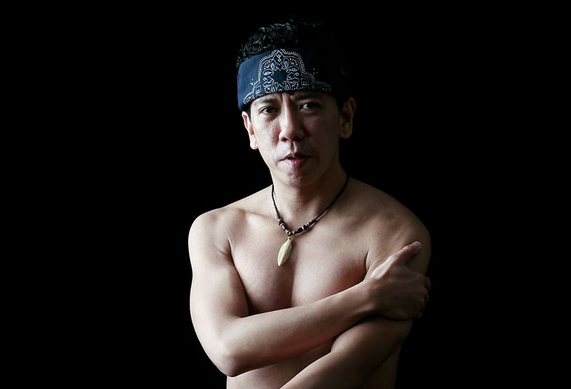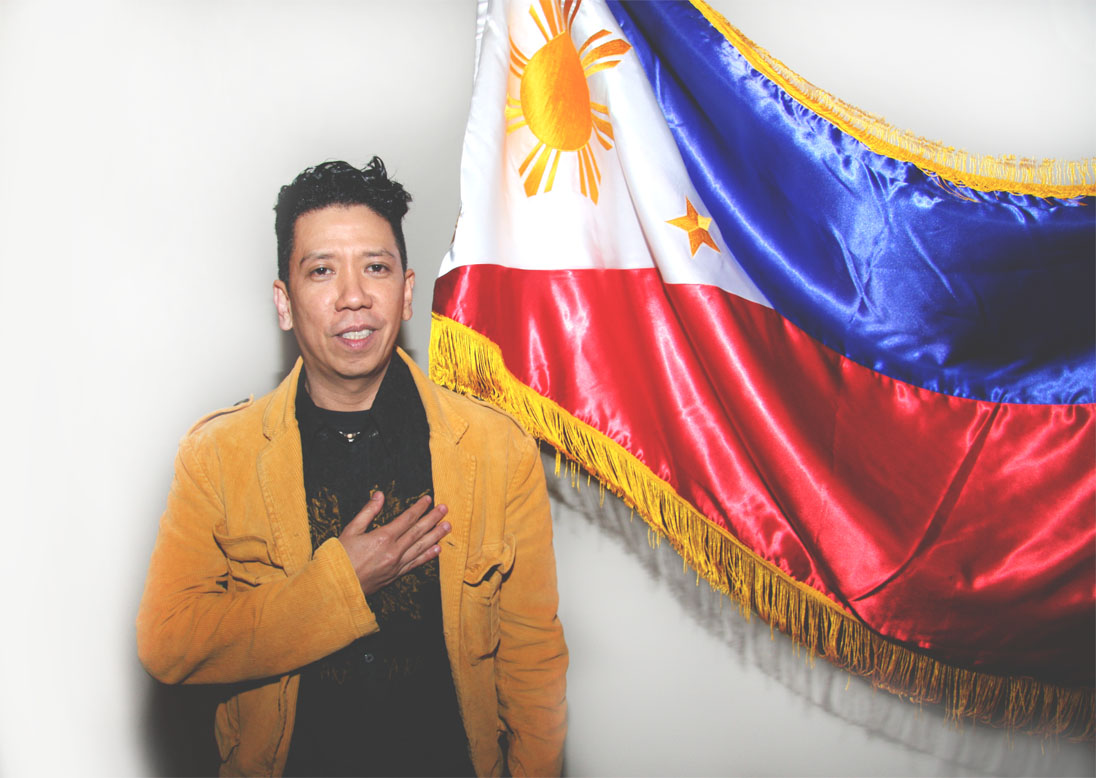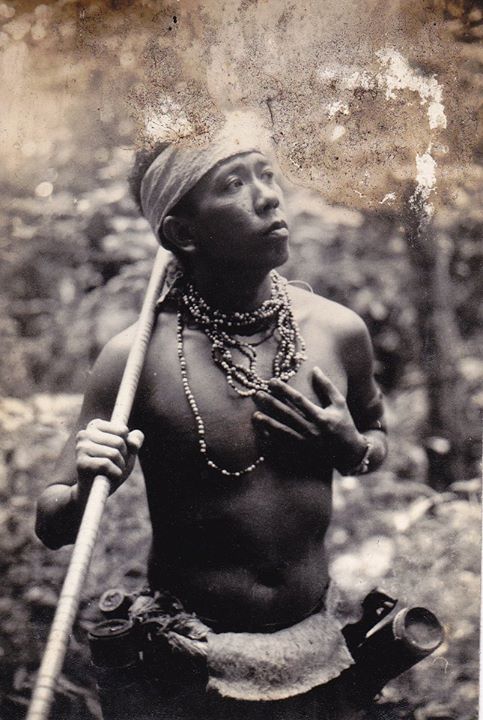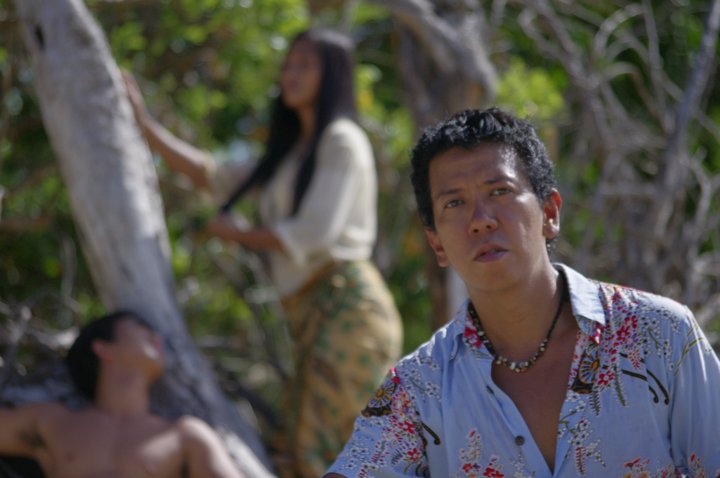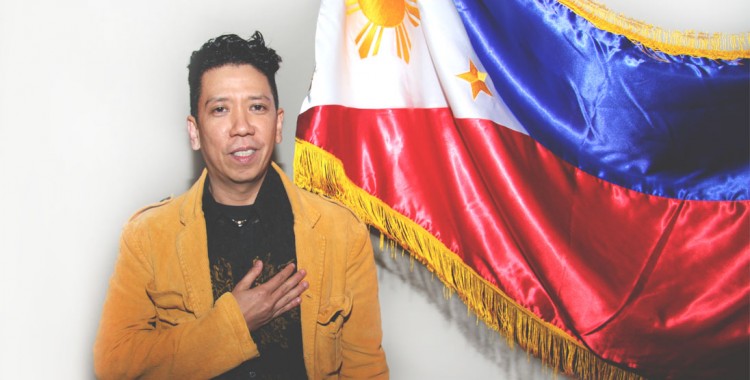
Indigenous Filipino Film and Life with Kanakan-Balintagos
A few weeks back, we dropped a double review of the first two films in acclaimed director Kanakan-Balintagos’ trilogy surveying the myths and histories of his native land, Palawan. Today, we present an in-depth interview about the life of Kanakan-Balintagos (Hunter of Truth), how it transformed growing up in the Philippines, how he discovered his cinematic calling, and what advice he imparts to young culture makers.
Sampaloc Boy, Palawan Shaman
I grew up in Sampaloc, the heart of Manila. We have a beautiful house surrounded by slums (eventually became the location for my short “Impeng Negro” and my full feature film “Ang Pagdadalaga ni Maximo Oliveros {The Blossoming of Maximo Oliveros}). But the slums taught me the true meaning of “Pakikipag-Kapwa,” finding the self in others. It is where I learned the true meaning of brotherhood and comradeship. The people were there for each other. It is where I learned – People might be poor, but not in spirit.
But I come from the first generation from my Mother’s tribe, the Palawán, who was born in the city. I belatedly discovered that my Mother actually belongs to a lineage of Royal Shaman-Kings, The TUNGKUL. The Baliyan is the Shaman and the Panglima is the chieftain- but the TUNGKUL is both Baliyan and Panglima, the spiritual and political leader. The Tungkul had the greatest magic of the tribe. In Palawan, I learned that man and nature is one.
On Martial Law of my Youth
There was a certain feeling of false security (under Martial Law). Everyday, you see Marcos on television with his long speeches without any teleprompter or paper in hand, American TV and Japanese Animation was in proliferation. Erotic Cinema was everywhere in the movies [for escapism], the newspapers always had Imelda and Ferdinand (Marcos) on the front pages, the city was very clean from the Metro Aids. Marcos during Martial Law actually had 5,000 of the most intelligent progressive people killed. These people who believed in true freedom, cared and loved their country were all “salvaged” by the military. That is why now, this country is being run by idiots and apathetic people. We are still in the burden of the past dictatorship.
But it was also the time of Great Cinema! When filmmakers subtlely showed that people were actually not free, and poor in a metaphorical way, in commercial cinema through films by Lino Brocka & Ishmael Bernal. They used melodrama and film noir to express this.
Movies like “Manila sa Kuko ng Liwanag (Manila at the Claws of Neon Light)’ by Lino Brocka, about a lost tragic true love trapped in the city of Manila amidst corruption which, of course, fails to survive, was created (which was considered one of the 100 best films of the 20th century by the British Film Institute). Himala by Ishmael Bernal, about blind faith was ironically funded by the First Lady. Most of the these subtle political films ended tragically, where the hero, heroine, or both were trapped as if stating that a life in a dictatorship had no hope.
The root of my Art and the root of Apathy
I was part of a special school that was created during Marcos’ time- the Philippine Science High School, where they chose the top 240 students in the Philippines. Two exams were given to the top students from all the regions (7,100 islands), and whoever passed both screenings got a scholarship in Pisay (our term of endearment to the school- Phil Sci=Pisay). We were supposedly the Best of the Best, the Cream of the Crop in the country. But we were luckier because our teachers were brilliant and very progressive! My third feature film showed our life in Pisay.
Our Social Science teachers showed us how all the Presidents of the Philippines were actually decisively sanctioned by the US. But the main catalyst that made us realize we were in a country that was corrupt, poor, and dangerous was when our teachers brought us to “Smoky Mountain“- mountains of trash where people lived and were scavengers for trash to survive. We also attended progressive exhibits that depicted “Hamletting,” people being displaced from their land, and ironically the word “Salvaging” were “subversive” people who were abducted and tortured for their beliefs. We appeared free but was actually in the shadow of US Imperialism.
Our Filipino teachers made us stage chapters from Philippine National Hero, Jose Risal- “Noli me Tangere” and “El Filibusterismo”- the two novels that served as a catalyst against Spanish rule. We are a country that was liberated through literature and art. The staging of the chapters in Noli and Fili made me discover my directing talent! That is when I realized I actually had talent in directing and a box office draw! LOL.
I did experimental theater when I studied Theater Arts at the University of the Philippines. After doing my directing-playwriting thesis with the play “Ang Maikiling Buhay ng Apoy (The Brief Lifespan of Fire), interwoven myths that my Mother told me when I was a kid to put me to sleep, I returned to my tribal land to search for the roots of these myths. I rediscovered my indigenous roots. I experienced a complete culture and when I witnessed the Basal ritual, I was enthralled by the aesthetics of this ritual and realized I couldn’t capture this in Theater and had to discover a new medium- which is Cinema.
The first time I went to my tribal land was when I was five years old. The elders were surprised that I knew every Lihiyon or “enchanted” areas like the Bolokuin, an enchanted forest; the Muyos ni Lahim-ma, the lake where fresh and salt waters meet; the Gusong-gusong, a sacred sandbar where everyone picked up Ramis or tiny clams…. they said, its as if I grew up in Puring , my mother’s hometown at the end of South Palawan. But the elders told me that the Diwata or spirit of the land does not know me yet since I was born in the city. That I have to return and the ancestral spirits will know me by the second time.
The promise from the elders that I will see these mythical landscapes.
One of the elders, Upo Aturan, told me the story of how an ancestor married two sisters, and were the first two wives or Duay. Ironically, he was also one of the last script writers. Cinema for me is not only storytelling but also weaving… weaving stories, experiences and dreams. The Greeks interpreted their myths through Theater. And their stories are unforgotten. Myself as a modern Palawan expresses it through Cinema as a medium of remembering. Our Presence becomes our History.
Recently, all the elders- Upo Majiling, Upo Aturan and my Aunt Nini,- who had the knowledge of the Surat Inaborlan, the Palawan Script,- had passed away and I realized I am the last “script” writer in Puring. Upo Majiling taught me the Inaborlan. I practiced with my Auntie Nini. I validated the symbols with Upo Aturan. It is timely that I made this film about our ancient script. And now I have a great need to discover other communities, the last “script” writers… if there are still some who practice our ancient form of writing.
When I did my first feature documentary Basal Banar, I not only captured the culture of my people but also documented the pakikibaka or struggle to reclaim Ancestral Land stolen during Marcos’ times. I can’t just be a witness, but I had to participate in mapping our Ancestral land through the memory of my Mother’s stories of these Lihiyon or Sacred places. When I got featured in National TV in investigative journalist Howie Severino’s “Ang Pagbabalik sa Tribo ( Return to the Tribe)” through the Probe Team, this became the catalyst for NGOS to support our Ancestral Domain Claim. NGOs like PAFID ( Philippine Association of Intercultural Development) did the GPS mapping of our Ancestral Domain and the Task Force Bugsuk, an investigative group helped research the history of land grabbing in South Palawan.
The Palawan Trilogy is not a trilogy of plot but of thought. Busong, Palawan Fate, is my people’s philosophy. What we do to nature, we do to ourselves. Baybayin, The Palawan Script, is my people’s culture. We were a complete culture with rituals, theater, customs, traditions and a way of writing. The last part based on a Deluge myth is Sumbang which will capture my people’s mythical History.
You are not only an artist nor a storyteller. You are an activist against forgetting; You are well of memory of your ancestors waiting to be remembered. A weaver of things felt, smelt, seen, heard, dreamt and tasted that others have not tasted, dreamt, heard, seen, smelt nor felt… You are a hunter of truth.
